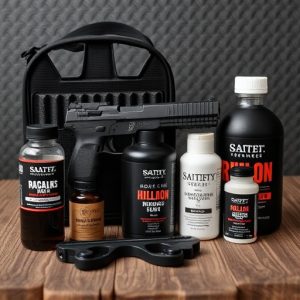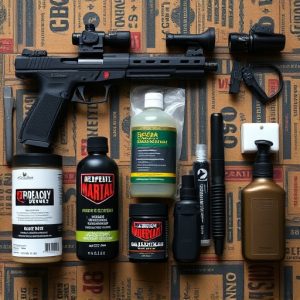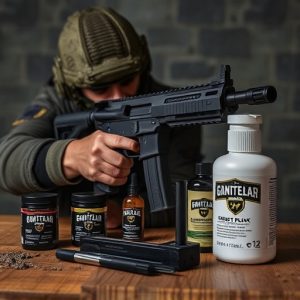Exploring Less Lethal Weapons for Personal Defense: A Guide to Safety and Ethics
Personal defense products have undergone significant advancements, offering a diverse range of non-…….
Personal defense products have undergone significant advancements, offering a diverse range of non-lethal options for self-protection tailored to various user needs and environments. These tools are designed to discourage violence and provide effective self-defense against threats. The market encompasses pepper sprays, stun guns, personal alarms, and defense apps that help deter assaults and aid in escaping dangerous situations. Products like personal alarms are particularly useful in crowded areas for attracting attention and discouraging potential attackers. Innovative defense apps offer immediate support and emergency response services. It's crucial for users to stay informed about the legal regulations of personal defense products to ensure their use aligns with the law, thus optimizing personal safety strategies. The article discusses the role of these products as effective deterrents or self-defense options, highlighting the accessibility and ease of use of pepper spray and the various models of stun guns, including contact and remote activation devices. Defensive sprays like Mace, complemented by personal alarms, are also covered for their capabilities in deterring attackers and alerting bystanders. Impact tools with dual functions, such as batons and flashlights with stun capabilities, are presented as well. For those preferring alternatives to traditional pepper spray, pepper gel is mentioned as a less wind-affected option. The importance of understanding local laws and proper training in the use of these products cannot be overstated. Each product category is designed with user safety, efficacy, and legal compliance in mind, making them essential components for personal defense arsenals. The ethical implications of using personal defense products are also addressed, emphasizing their role as non-lethal alternatives and the necessity for responsible use to align with societal shifts towards less harmful defense methods. Legal variations across jurisdictions further complicate the ethical landscape, highlighting the duty of all stakeholders to promote the safe and ethical use of personal defense products.
Exploring the landscape of personal protection, this article delves into the evolution and application of less lethal weapons within the realm of self-defense. From pepper spray to stun guns, the spectrum of personal defense products available today offers a range of options for individuals seeking to safeguard their well-being without resorting to lethal force. We will examine their effectiveness and the ethical implications they carry, ensuring a comprehensive understanding of their role in modern self-protection strategies. Join us as we navigate the critical considerations surrounding personal defense products and their place in today’s security measures.
Understanding the Role of Personal Defense Products in Modern Self-Protection
Personal defense products have become increasingly sophisticated and diverse, offering individuals a range of options to enhance their safety and security. These tools are designed to provide a non-lethal means of self-protection against potential threats, emphasizing the de-escalation of conflict rather than direct harm. From pepper sprays that temporarily incapacitate an assailant to stun guns that deliver a high-voltage shock, personal defense products serve as effective deterrents. The selection of these items also caters to various demographics and situations, ensuring there is a suitable product for different needs. For instance, personal alarms can be a highly effective tool in crowded areas, drawing attention to an individual’s plight and potentially deterring would-be attackers. Additionally, the advent of personal defense apps has introduced a digital layer of security, offering real-time assistance and emergency response features. Understanding the role of these products in modern self-protection is crucial for anyone interested in maintaining their personal safety, as they represent a critical component of a comprehensive personal security strategy. Users must familiarize themselves with local laws and regulations regarding personal defense products to ensure legal compliance while effectively utilizing them for protection.
The Spectrum of Less Lethal Weapons: Options for Personal Defense
When considering personal defense, it’s crucial to explore the full spectrum of less lethal weapons available. These options serve as a deterrent or means of self-defense that can incapacitate an assailant without causing permanent injury or death. Pepper spray, for instance, is a widely recognized personal defense product that uses oleoresin capsicum to temporarily blind and immobilize an attacker. It’s a compact and easy-to-deploy tool that can provide a significant defensive advantage in a threatening situation. Another option is stun guns or Tasers, which deliver a high-voltage electric shock to overpower an aggressor without direct physical contact. These devices are designed to be non-lethal but highly effective, with models varying from handheld units to wearable devices that can be activated at a distance.
Beyond these, personal defense products also encompass defensive sprays like Mace, which are formulated for maximum effectiveness and are often accompanied by personal alarms to draw attention to the incident and deter further aggression. Additionally, impact tools such as batons and flashlights with built-in stun capabilities offer a blend of striking power and electroshock delivery. For individuals seeking a non-contact solution, pepper gel offers a more directional and less likely to be affected by wind application compared to traditional spray options. Each of these products is designed with safety, effectiveness, and legal considerations in mind, making them valuable components of a personal defense strategy. It’s essential for users to familiarize themselves with the laws governing the use of such devices in their jurisdiction and to receive proper training on their operation.
Evaluating the Effectiveness and Ethical Considerations of Personal Defense Products
Personal defense products have become a subject of significant interest and debate, particularly as they evolve to offer enhanced protection while navigating ethical boundaries. The effectiveness of these tools is multifaceted, hinging on factors such as their design, deployment, and the context in which they are used. For instance, pepper spray and stun guns have been widely recognized for their role in deterring attackers and providing a non-lethal means of self-defense. These products are specifically engineered to incapacitate assailants without causing permanent harm, aligning with the growing societal preference for less lethal alternatives to firearms.
However, the ethical considerations surrounding personal defense products cannot be overlooked. The use of any defensive mechanism raises questions about proportionality and intent. It is imperative to assess whether these products are employed as a last resort in genuinely threatening situations rather than as a first line of aggression. Moreover, the potential for misuse or accidental deployment necessitates rigorous safety standards and clear guidelines on their use. The ethical landscape is further complicated by the variability in legal frameworks across different jurisdictions, which can influence the appropriateness and legality of certain personal defense products. As such, the conversation around these products extends beyond their technical specifications to include broader societal implications and the responsibility of manufacturers and users alike to ensure their safe and ethical application.


